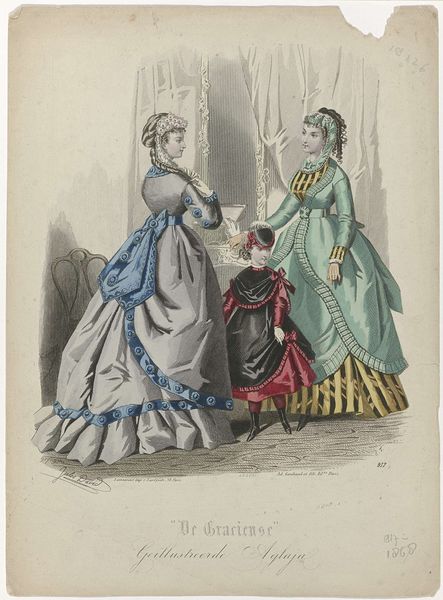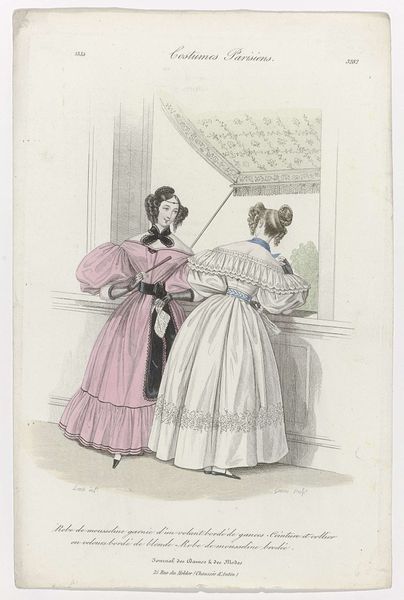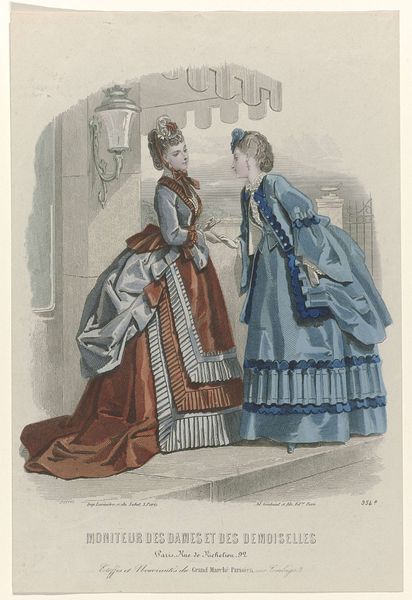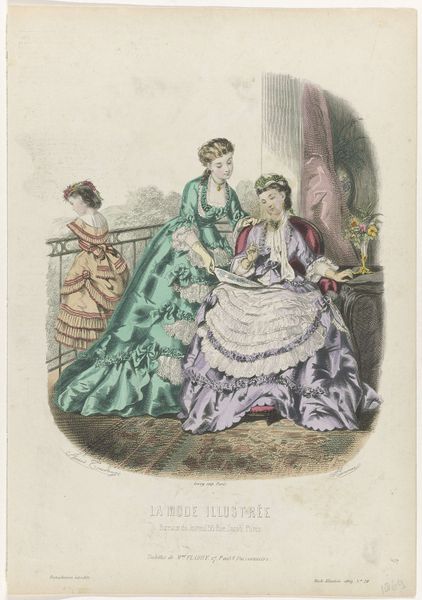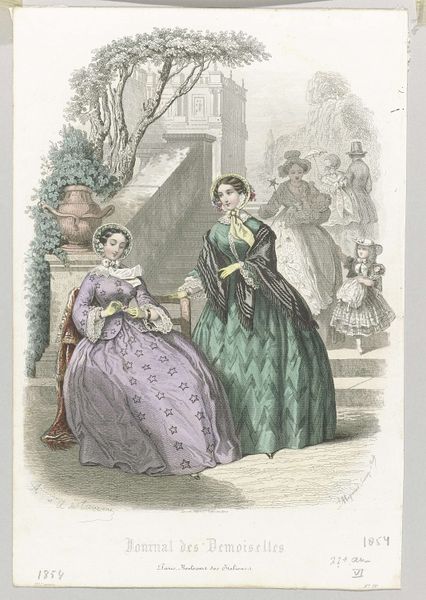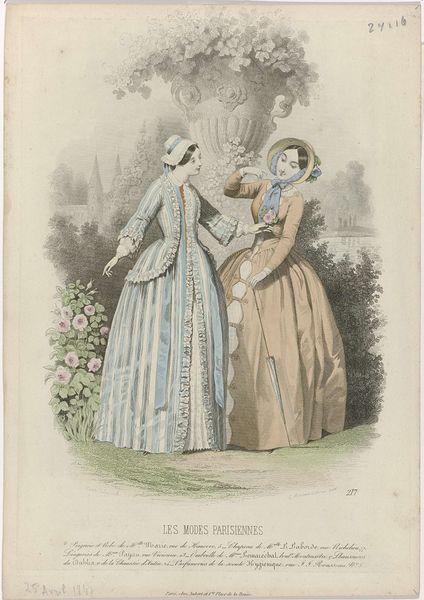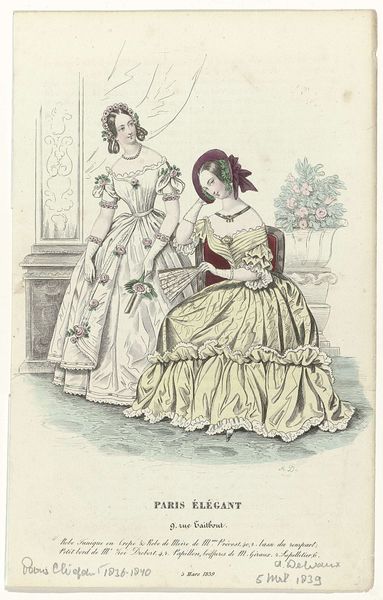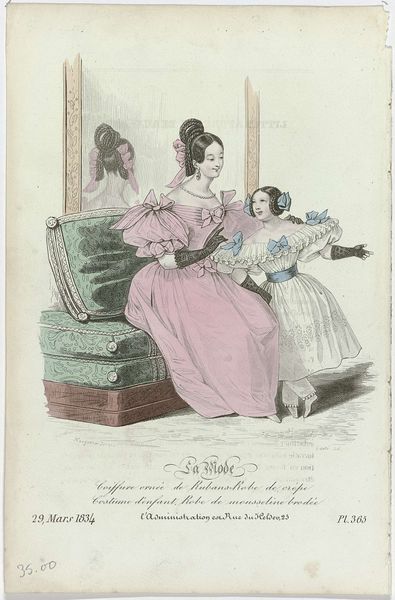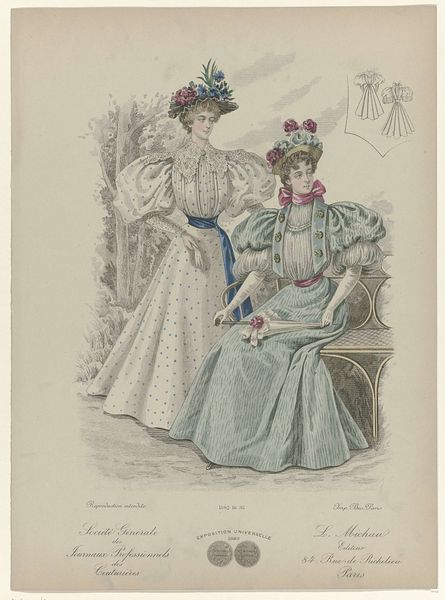
Journal des Dames et des Modes, Costumes Parisiens, 25 juillet 1835, (3290): Coiffures à la Ninon (...) 1835
0:00
0:00
print, watercolor
#
portrait
# print
#
figuration
#
watercolor
#
romanticism
#
genre-painting
#
academic-art
Dimensions: height 222 mm, width 146 mm
Copyright: Rijks Museum: Open Domain
Editor: This print, titled *Journal des Dames et des Modes, Costumes Parisiens*, dated 1835, by Jean-Denis Nargeot, features two women in elaborate dresses. There's a stillness to the image, almost staged, but something about it intrigues me. What do you see in this piece? Curator: Immediately, I'm drawn to the silent dialogue established by the fashion. The clothing itself operates as a complex symbol, especially during the Romantic period. The silhouette, the fabrics... it’s a coded language of status and aspiration. Note the puffed sleeves: what do they suggest to you? Editor: They look quite impractical, almost exaggerated, which makes me think of wealth and leisure. Someone who doesn't have to work with their hands. Curator: Precisely. Consider also the fan and the floral embellishments. Fans have historically been a prop in the theater of social life. What feelings might the flowers represent? Editor: Maybe innocence or femininity, common associations. Curator: Often, but look closer. The dark hues intertwined with the delicate pastels, creating an unsettling juxtaposition. Perhaps they signal something beyond conventional virtues, revealing deeper passions or inner lives hidden beneath the surface of etiquette. Notice how the artist contrasts the sharp lines of the architecture with the flowing lines of the dresses: how does it alter the perception of that setting? Editor: I hadn’t considered that tension. The architecture is imposing, almost prison-like, versus the freedom of the dresses' fluidity. It definitely enhances a feeling of contained passion. I see now that fashion during this period did more than reflect status: it acted as an emotional signifier! Curator: Precisely! Fashion operates as its own complex cultural system, a means by which a story of cultural memory is told, and reformed through each adaptation and wearing of garments.
Comments
No comments
Be the first to comment and join the conversation on the ultimate creative platform.
